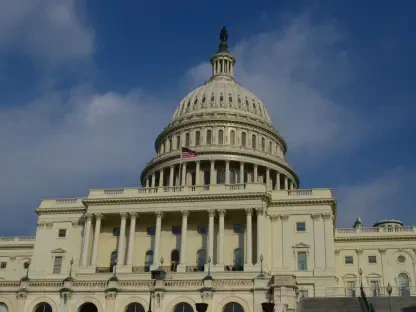Imagine a state government on the brink of losing millions in federal funding for critical infrastructure projects due to a single compliance oversight, a scenario that is becoming all too common as federal scrutiny over grantmaking intensifies. This growing pressure places unprecedented demands on state and local governments to adapt or risk fiscal collapse, with essential services like education, public health, and transportation hanging in the balance. The stakes are high, and this guide aims to equip government entities with practical strategies to modernize grant management, ensuring compliance with stringent federal regulations while enhancing operational efficiency. By navigating this complex funding landscape, governments can secure vital resources and better serve their communities.
The purpose of this guide is to provide a clear roadmap for state and local governments grappling with the new normal of over-compliance and federal oversight. It addresses the urgent need to transform outdated systems and processes in an era where transparency and accountability are non-negotiable. Modernization is not just about survival; it’s about building resilience to meet current demands and prepare for future challenges. The following sections outline actionable steps to achieve these goals, focusing on technology adoption and strategic alignment as key pillars of success.
This guide is particularly crucial given the historical shifts in federal policy that have reshaped grantmaking dynamics. With billions in grants frozen or programs cut in recent years, the ripple effects have forced governments to prioritize adherence to complex regulations. By following this structured approach, state and local entities can position themselves to not only meet federal expectations but also improve service delivery to constituents who depend on these funds for essential needs.
Navigating the New Landscape of Government Grantmaking
The environment of government grantmaking has undergone a seismic shift under heightened federal oversight, creating a labyrinth of compliance and transparency requirements for state and local entities. This new landscape demands rapid adaptation to avoid penalties or loss of critical funding that supports infrastructure, education, and public health initiatives. Governments must now operate with precision, ensuring every dollar is accounted for under stringent guidelines such as 2 CFR 200, which governs federal awards.
Beyond mere compliance, the current era challenges governments to rethink their operational frameworks in response to fiscal constraints and ideological shifts at the federal level. The complexity of managing grants as direct recipients or pass-through administrators adds layers of responsibility, often with limited resources to support these efforts. This guide dives into solutions that address these pain points, focusing on technology and process improvements as essential tools for navigating this terrain.
The urgency to modernize cannot be overstated, as the consequences of inaction are dire—ranging from delayed projects to diminished public trust. By embracing strategic changes, governments can turn these challenges into opportunities to streamline operations and build stronger, more accountable systems. The subsequent sections provide a detailed framework to achieve this transformation, ensuring sustainability in an era defined by scrutiny.
The Impact of Federal Oversight on State and Local Funding
Federal oversight has dramatically altered the funding landscape for state and local governments, tracing back to significant policy changes that froze billions in grants and eliminated key programs. These actions created a domino effect, compelling governments to prioritize compliance with federal mandates to maintain access to vital resources. The resulting environment is one where every decision must align with rigorous standards, often at the expense of flexibility or innovation.
This intensified scrutiny stems from a broader push for accountability, affecting how governments allocate funds for essential services. With federal dollars constituting a significant portion of budgets for areas like transportation and healthcare, the pressure to demonstrate fiscal integrity is immense. Failure to meet these expectations can jeopardize not just individual projects but entire community welfare systems, underscoring the critical nature of adaptation.
Moreover, the reliance on federal funding means that state and local entities must now navigate a maze of reporting requirements and audit processes with limited room for error. The historical context of these policy shifts reveals a pattern of increasing demands, pushing governments to overhaul outdated practices. Understanding this backdrop is essential for implementing effective modernization strategies, which are explored in detail in the following sections.
Key Strategies for Modernizing Grant Management
Modernizing grant management is a multifaceted endeavor that requires a deliberate approach to technology, system integration, and organizational alignment. State and local governments face unique challenges in balancing compliance with operational efficiency, but a structured framework can simplify this process. This section outlines three critical strategies to transform grantmaking practices, ensuring both adherence to federal guidelines and improved service delivery.
Each strategy focuses on a distinct aspect of modernization, from adopting cutting-edge tools to fostering internal collaboration. By addressing fragmented systems and cultural barriers, governments can create a cohesive infrastructure capable of withstanding federal scrutiny. These steps are designed to be practical and scalable, offering a clear path forward for entities of varying sizes and resources.
The importance of these strategies lies in their ability to address immediate compliance needs while building long-term resilience. Governments that implement these changes can expect not only to secure funding but also to enhance public trust through transparent and efficient operations. The detailed steps below provide a comprehensive guide to achieving these outcomes.
Step 1: Adopting a Modern Grants Management System (GMS)
A modern Grants Management System (GMS) serves as a cornerstone for achieving compliance and operational efficiency in today’s scrutiny-heavy environment. This technology enables governments to track grant activities, monitor subrecipient performance, and maintain real-time documentation that aligns with federal standards. By automating routine tasks, a GMS reduces administrative burdens and allows staff to focus on strategic priorities.
Implementing such a system is not merely about digitization; it’s about creating a robust framework for audit-readiness and transparency. Governments can use a GMS to centralize data, ensuring that all stakeholders have access to accurate, up-to-date information. This capability is vital for meeting the stringent reporting demands imposed by federal oversight, minimizing the risk of funding disruptions.
Furthermore, the adoption of a GMS signals a commitment to modernization that can inspire confidence among constituents and federal partners alike. It transforms the grant management process into a streamlined operation, capable of adapting to evolving regulations. The following subsections delve into specific benefits of this technology, highlighting its role in compliance and community service.
Maximizing Compliance with Real-Time Data
One of the standout features of a modern GMS is its ability to provide real-time, audit-proof documentation that adheres to federal guidelines. This functionality ensures that governments can instantly access and present data during audits, reducing the likelihood of penalties or funding loss. It’s a proactive measure that addresses the heightened scrutiny of federal oversight head-on.
Real-time data also empowers governments to identify and rectify discrepancies before they escalate into major issues. By maintaining a continuous record of grant activities, a GMS minimizes errors and fosters accountability at every level of administration. This level of precision is indispensable in an era where compliance is a prerequisite for funding.
Enhancing Constituent Experience Through Streamlined Processes
Beyond compliance, a GMS significantly improves the constituent experience by simplifying application processes and accelerating decision-making. Applicants no longer face cumbersome paperwork or delayed responses, as the system automates workflows and ensures timely updates. This efficiency directly translates to better service delivery for communities relying on grant-funded programs.
Additionally, streamlined processes enhance public perception of government operations, demonstrating a commitment to accessibility and responsiveness. When constituents encounter fewer barriers to accessing resources, trust in local governance strengthens. A GMS thus serves as a dual-purpose tool, meeting internal compliance needs while uplifting external stakeholder engagement.
Step 2: Consolidating Disconnected Systems for Operational Agility
Many state and local governments still rely on fragmented, outdated systems to manage grants, leading to inefficiencies and compliance risks. Consolidating these disconnected setups into a unified platform is a critical step toward operational agility and fiscal integrity. This approach eliminates redundancies and ensures that all grant-related data is centralized for easy access.
The pitfalls of maintaining multiple systems are numerous, from increased costs to the inability to produce cohesive reports for federal audits. A consolidated system addresses these issues by providing a single source of truth, enabling governments to track funds and activities with greater accuracy. This shift is essential for meeting the demands of an oversight-driven funding landscape.
Moreover, consolidation paves the way for scalability, allowing governments to adapt to future regulatory changes without overhauling their infrastructure. By investing in a unified system now, entities can save resources in the long run while ensuring readiness for audits and reporting. The subsections below explore specific advantages of this strategy in detail.
Eliminating Costly Duplication in Grant Tracking
Duplicative systems for grant tracking create significant financial and operational burdens, often resulting in wasted resources and inconsistent data. By consolidating these systems, governments can eliminate redundant efforts, saving time and money that can be redirected to core services. This cost-saving measure is particularly crucial in a time of tight budgets and heightened scrutiny.
Unified platforms also reduce the risk of errors that arise from managing multiple, disconnected tools. When data is scattered across various systems, discrepancies are inevitable, leading to potential compliance violations. Consolidation offers a streamlined alternative, ensuring accuracy and efficiency in grant tracking.
Enabling Audit-Ready Reporting with Integrated Data
Integrated data through consolidated systems ensures that governments can produce audit-ready reports at a moment’s notice, a necessity under current federal oversight. This capability allows for seamless compliance with reporting requirements, as all relevant information is housed in one accessible location. It minimizes the stress and resource drain associated with audit preparation.
Additionally, integrated data enhances decision-making by providing a comprehensive view of grant performance and financial status. Governments can use this information to make informed choices about resource allocation and program adjustments. Such preparedness is a key component of maintaining federal funding and public trust.
Step 3: Aligning People, Processes, and Platforms for Success
Technology alone cannot drive modernization; success requires a holistic alignment of people, processes, and platforms within government entities. This step emphasizes the need to integrate data, streamline workflows, and dismantle operational silos to create a cohesive grant management ecosystem. Without this alignment, even the best systems may fail to deliver desired outcomes.
Achieving this synergy involves rethinking how teams collaborate and how processes are structured to support technological tools. Governments must ensure that staff are trained to use new systems effectively and that workflows are optimized for efficiency. This comprehensive approach is vital for sustaining modernization efforts over the long term.
The benefits of alignment extend beyond immediate compliance, fostering a culture of innovation and adaptability. By breaking down barriers between departments and aligning resources with strategic goals, governments can respond more effectively to federal demands and community needs. The following subsections provide insights into implementing this critical step.
Fostering Organization-Wide Commitment to Change
Cultural buy-in across government agencies is a prerequisite for successful modernization, as resistance to change can undermine even the most advanced systems. Encouraging organization-wide commitment involves engaging staff at all levels, from leadership to frontline workers, in the transformation process. This collective effort ensures that modernization is not seen as a top-down mandate but as a shared goal.
Communication plays a pivotal role in fostering this commitment, with regular updates and training sessions helping to align teams with new practices. When everyone understands the benefits of change—such as reduced workloads and improved outcomes—adoption rates improve. This cultural shift is essential for embedding modernization into the fabric of government operations.
Streamlining Workflows for Long-Term Efficiency
Streamlining workflows in tandem with technological upgrades reduces administrative burdens and enhances long-term efficiency. This involves mapping out existing processes to identify bottlenecks and redesigning them to align with modern systems like a GMS. The result is a more agile operation capable of meeting federal requirements without sacrificing service quality.
Efficient workflows also contribute to staff satisfaction by minimizing repetitive tasks and allowing focus on high-impact work. Governments that prioritize this alignment can build resilience against future regulatory shifts, ensuring that they remain adaptable in a dynamic funding environment. This step completes the modernization framework, tying together technology and human elements for lasting success.
Core Takeaways for Grant Modernization
- Adopt a modern GMS to ensure compliance with federal regulations and improve service delivery to communities.
- Consolidate fragmented systems to achieve audit-readiness and realize significant cost savings over time.
- Align people, processes, and technology for sustainable operational efficiency and adaptability to future demands.
Future Challenges and Broader Implications for Grantmaking
Looking ahead, state and local governments must prepare for emerging trends in grantmaking that promise to further complicate compliance landscapes. Experts like Matt Hanson from the National Grants Management Association predict a shift toward formulaic federal funding models, transferring greater responsibility to lower government levels. This change will intensify the need for robust systems to handle complex regulations independently.
Regulations such as NEPA, Davis-Bacon, and Build America Buy America are expected to increase burdens related to data collection, procurement, and reporting over the coming years. With federal oversight potentially scaling back in certain areas, state and local entities will need to build capacity to manage these obligations without direct support. This underscores the importance of investing in infrastructure now to avoid future disruptions.
The broader implications of these trends highlight modernization as a strategic imperative rather than a reactive measure. Governments that proactively adopt technology and streamline operations will be better positioned to navigate these challenges, ensuring continued access to funding. This forward-looking perspective reinforces the need for the strategies outlined in this guide, emphasizing their relevance beyond immediate compliance needs.
Embracing Modernization for a Resilient Future
Reflecting on the journey through this guide, it becomes clear that state and local governments have taken critical steps to adapt to an era of federal scrutiny by adopting modern grants management systems, consolidating fragmented setups, and aligning their internal frameworks. These efforts mark a significant shift toward operational efficiency and compliance, safeguarding vital funding for community programs.
As a next step, governments are encouraged to explore partnerships with technology providers and industry experts to further refine their modernization initiatives. Engaging in peer networks and training programs also offers valuable opportunities to share best practices and stay ahead of regulatory changes. These actions help build a foundation for sustained resilience.
Ultimately, the focus shifts toward continuous improvement, with an eye on emerging tools and policies that could shape grantmaking in the years ahead. By maintaining a proactive stance and investing in scalable solutions, governments position themselves to not only meet federal demands but also exceed community expectations, ensuring a stronger, more accountable future.









